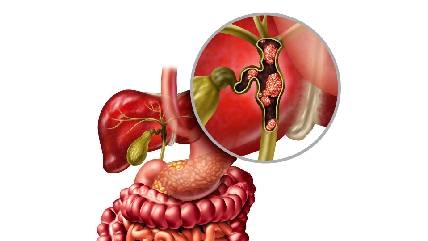
Bile duct cancer, also known as CHOLANGIOCARCINOMA, occurs when abnormal cells in your bile ducts grow out of control. These are four to five-inch long thin tubes that transport bile from your liver to your gallbladder and small intestine. Bile helps you digest the fat in the food.
Bile duct cancer is based on where it starts. OUTSIDE YOUR LIVER (EXTRAHEPATIC): This type occurs more often and is more treatable.
INSIDE YOUR LIVER (INTRAHEPATIC): It makes up 5% to 10% of cases of bile duct cancers.
HILAR CHOLANGIOCARCINOMA occurs in the bile ducts just outside of the liver. This type is also called PERIHILAR CHOLANGIOCARCINOMA.
Symptoms
- Dark urine
- Fever
- Itching
- Jaundice
- Light-colored stools
- Loss of appetite or weight loss
- Pain in your stomach, upset stomach, and vomiting
- Weakness
Causes / Reasons
Chronic bile duct stones, choledochal cyst (a congenital anomaly of the duct that transports bile from the liver to the gall bladder and small intestine), liver fluke infection (Liver fluke is a parasitic worm. People get infected when they eat raw vegetables, contaminated raw or undercooked freshwater fish or drinking contaminated water), and primary sclerosing cholangitis (a condition when inflammation causes scars within the bile ducts) are the cause of bile duct cancer.
Treatment
Biliary drainage, Photodynamic therapy, Radiation, Chemotherapy, Surgery, Liver Transplantation. Start treatment by cutting down on alcohol and quitting tobacco
Consult your doctor for a detailed medical examination and treatment.







